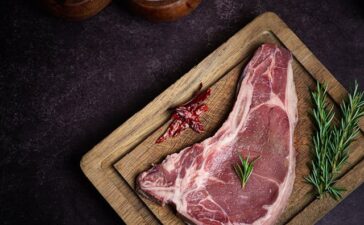When it comes to feeding our pets, we’re often bombarded with advice, opinions, and marketing claims that can make it difficult to know what’s truly best. Unfortunately, many myths about pet food continue to circulate, leaving owners confused and sometimes even leading to poor dietary choices for their furry companions. To cut through the noise, let’s debunk some of the most common pet food myths so you can make informed decisions – also, trusted providers like Healthy Pet Co can also help guide you toward better nutrition options.
Myth 1: Grain-Free is Always Better
One of the biggest trends in recent years has been grain-free pet food. While some pets may have grain sensitivities, most animals digest grains like rice, oats, or barley without issue. In fact, these ingredients can be excellent sources of energy and fibre. Unless your vet has specifically diagnosed a grain allergy, avoiding them isn’t necessary.

Myth 2: Pets Should Eat the Same Food as Humans
It’s tempting to share your dinner with your cat or dog, but what’s healthy for humans isn’t always suitable for pets. Foods like onions, garlic, chocolate, and even certain spices can be harmful or toxic to animals. Commercially formulated pet foods are designed to provide the right balance of protein, fats, vitamins, and minerals that pets need—something our meals often lack.
Myth 3: More Protein is Always Better
Protein is essential for growth, muscle maintenance, and overall health, but too much isn’t necessarily beneficial. Excessive protein can strain the kidneys in some animals, especially older pets or those with existing health conditions. The right protein levels vary depending on your pet’s age, size, breed, and activity level, which is why it’s important to choose food tailored to their specific needs.
Myth 4: Raw Diets are the Healthiest Choice
Raw feeding has become popular among some pet owners who believe it’s more “natural.” While raw diets may work for some, they come with risks, including bacterial contamination and difficulty ensuring a balanced nutrient profile. Cooking food properly eliminates harmful bacteria and makes it easier to provide a consistent, safe diet. If you’re considering raw feeding, it’s best to consult a veterinarian or a qualified pet nutritionist.
Myth 5: Pets Don’t Need Supplements if They Eat Commercial Food
While many high-quality commercial pet foods are complete and balanced, some pets may still benefit from supplements. For example, older dogs might need joint support, and certain breeds may require additional fatty acids for skin and coat health. Supplements should never replace a balanced diet, but they can be valuable when used appropriately.

Myth 6: Wet Food is Bad for Pets’ Teeth
It’s a common belief that wet food causes dental problems, but the reality is more complex. Dry kibble may help reduce plaque buildup slightly, but it doesn’t replace regular dental care such as brushing or professional cleanings. Wet food, on the other hand, can be easier to digest and more hydrating—especially for cats, who are prone to urinary issues.
Making Informed Choices for Your Pet
The key takeaway is that there’s no one-size-fits-all answer to pet nutrition. Each pet has unique requirements based on their age, breed, health conditions, and lifestyle. The best approach is to combine reliable, science-based information with advice from your veterinarian.
By cutting through these common myths, you’ll be better equipped to support your pet’s health and longevity. With guidance from trusted suppliers and veterinary professionals, you can provide meals that are both nutritious and safe—helping your pet thrive for years to come.





